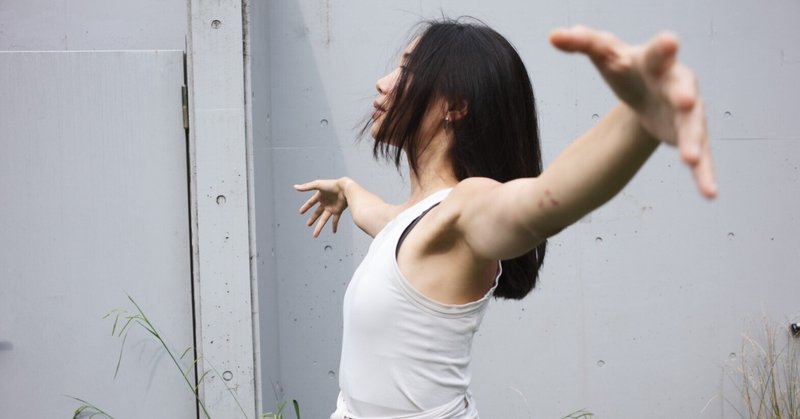
Pranayama Vol.1 プラナヤマとはなに?What is Pranayama?
Introduction
English is the below
こんにちは、Misaです。いつも私の記事を読んでくださりありがとうございます。
この前、大型客船の上で1ヶ月ほど過ごし、船上でヨガを教える機会がありました。朝7時頃に波に揺れながら水平線から出てくる太陽とともにヨガをしましたが、これは私にとって特別な経験でした。私たちは自然と一体なんだなと実感し、水や太陽のエネルギーを全身で感じ取ることができました。この環境での太陽礼拝は本当に最高!身体のエネルギーが太陽と繋がって循環していました。
さて、「プラナヤマ」って聞いたことありますか。
サンスクリット語で「生命エネルギー(呼吸)のコントロール」という意味です。私たちは普段何気なく呼吸をしていますが、呼吸には大きなパワーが秘められています。
今回は「プラナヤマ=生命エネルギー(呼吸)のコントロール」についてお話します。
Hello, this is Misa. Thank you very much for always reading my blog.
Recently, I had the opportunity to spend about a month on a cruise ship and teach yoga on board. We practised yoga around 7 a.m. while swaying with the waves, accompanied by the sun rising from the horizon, and it was a special experience for me. I felt connected to nature and was able to feel the energy of the water and the sun throughout my body. Sun salutations in this environment were truly amazing! My body's energy was circulating and connecting with the sun.
Now, have you ever heard of "Pranayama"?
In Sanskrit, it means "control of life energy (breath)." We usually breathe unconsciously, but there is great power hidden in our breath.
This time, I will talk about Pranayama = control of life energy (breath).
What is Pranayama?
ヨガの八支則の4番目にあたるのが、プラナヤマです。
私たちの呼吸は常に変化しています。自分自身の呼吸を観察してみてください。今、どういった呼吸をしていますか。呼吸は心と身体と繋がっており、緊張やストレスがあると自然と浅く早い呼吸になります。
一方で、自分自身でコントロールすることができる身体の機能のひとつでもあります。
プラナヤマはよく呼吸法と表現されますが、ヨガの中ではこの呼吸法を実践し、心と体のバランスを維持します。
The fourth of the eight limbs of yoga is Pranayama. Our breath is constantly changing. Take a moment to observe your own breath.
What kind of breath are you taking right now?
Breath is connected to both the mind and body, and when there is tension or stress, it naturally becomes shallow and fast. On the other hand, it is one of the bodily functions that we can control ourselves.
Pranayama is often referred to as breath control, but in yoga, practising this breath control helps maintain a balance between the mind and body.
Benefits of Pranayama
Pranayamaを実践することで、4つの良い効果があります。
1.不安やストレスを軽減する
2.睡眠の質を改善する
3.認知機能の向上
4.心肺機能を向上させる
呼吸法を実践することで、自律神経を整えることができます。ストレスや緊張下では交感神経が優位になっていますが、呼吸をコントロールすることで副交感神経が優位となりリラックスします。寝る前に呼吸法を取り入れることで、入眠しやすくなるだけでなく、全体の睡眠の質を向上させます。呼吸は心臓や脳などの重要な臓器とも密接に関連しており、血圧低下や脳内のα波が発生することにより、認知機能や心肺機能を向上させます。
Practicing Pranayama has four beneficial effects:
Reducing anxiety and stress.
Improving sleep quality.
Enhancing cognitive function.
Improving cardiopulmonary function.
By practising breathing techniques, you can regulate the autonomic nervous system. Under stress or tension, the sympathetic nervous system predominates, but by controlling the breath, the parasympathetic nervous system becomes dominant, leading to relaxation. Incorporating breathing exercises before bedtime not only makes it easier to fall asleep but also improves overall sleep quality. Breathing is closely related to vital organs such as the heart and brain, and by lowering blood pressure and inducing alpha waves in the brain, it enhances cognitive function and cardiopulmonary function.
Types of Breathing Techniques
様々な呼吸法がありますが、今回はざっくり紹介しますね。
1. カパオバティ
この技法は、短くて強い呼気とやや長く受動的な吸気を交互に行うことで構成されています。心肺機能を向上させるために効果的です。
2. ウジャイ
喉を軽く収縮させて空気の通り道に抵抗を作り出すことで実践できます。リラックス効果が期待できます。
3. 三部位の呼吸
手のひらを胸とお腹に当てて実践する呼吸法です。肺の容量や身体の構造に対する自覚を高めます。
4. 片鼻呼吸法
片鼻ずつ呼吸をします。心身を落ち着かせる効果があります。
呼吸法の種類によって、体を温めることや、冷ますこと、心を落ち着かせるなど効果が様々です。そのため目的に合わせて呼吸法を選択し、実践することが大切です。
1. Kapalabhati
This technique consists of alternating short, strong exhalations and slightly longer, passive inhalations. It is effective in improving cardiopulmonary function.
2.Ujjayi
This can be practised by gently constricting the throat to create resistance to the passage of air. It is expected to have a relaxing effect.
3. Three-Part Breath
This breathing technique is practised by placing the palms on the chest and abdomen. It enhances awareness of lung capacity and body structure.
4.Anulom vilom
You breathe through one nostril at a time. It has a calming effect on the mind and body.
Depending on the type of breathing technique, it has various effects such as warming or cooling the body, calming the mind, etc. Therefore, choosing and practising breathing techniques according to your purpose is important.
I and Pranayama
私にとってプラナヤマの実践は「私らしく生きるために」かけがえのない存在です。
よくポジティブだと言われますが、私が前向きでいられる理由のひとつはプラヤマのお陰だと思っています。
「深く息をすって、完全に吐き切る」
深く呼吸をすることで、過去でも未来でもない今この瞬間に存在していることを実感して、幸せを感じる。
日常で気軽に取り入れるように意識しています。
まず朝起きてやることはプラナヤマです。
自分自身の呼吸や身体の状態を観察し、その時に合った呼吸法を取り入れます。朝は忙しいときもあるのですが、優先順位を高くして5分でも良いから毎朝実践するようにしています。外で行うと新鮮な空気をたくさん吸収できるのでおすすめですが、室内で行うときは窓を開けて行います。
電車に乗っているときや、仕事中もときどき呼吸に意識を向けて呼吸法を取り入れるようにしています。
仕事中はとくに交感神経が優位になっているため、緊張やストレスに気づきにくくなります。呼吸は浅く身体は硬くなるため、結果として体の不調に繋がることを実感しています。そのため気づいたときに1回でも良いから深い呼吸をするなど心がけています。
寝る前は、部屋を暗くしてキャンドルなどを使用してプラナヤマを実践するのが好きです。リラックスできるアロマを使用するとより効果的です。
呼吸をすることは、道具やお金は必要ありません。いつでもどこでも実践できるものです。ぜひみなさんも日常でプラナヤマを上手に取り入れていきましょう。
For me, the practice of Pranayama is an invaluable aspect of "living authentically." I'm often described as positive, and one reason I can maintain that positivity is thanks to Pranayama. By "taking deep breaths and exhaling completely," I feel present in this moment, neither dwelling in the past nor worrying about the future, and that brings me happiness. I consciously incorporate it into my daily life.
The first thing I do when I wake up in the morning is Pranayama. I observe my own breath and bodily state and incorporate the breathing technique that feels right at that moment. Even on busy mornings, I prioritize practising it for at least five minutes every day. I recommend doing it outdoors to breathe in plenty of fresh air, but I open the windows when practising indoors.
When I'm on the train or at work, I sometimes focus on my breath and incorporate breathing techniques. Especially during work, when the sympathetic nervous system is dominant, it's easy to overlook tension and stress. I've noticed that shallow breathing leads to stiffness in my body, which ultimately results in physical discomfort. So, whenever I notice, I make a conscious effort to take deep breaths, even just once.
Before bed, I like to dim the lights and practice Pranayama using candles or aromas that help me relax.
Breathing requires no tools or money. It's something you can practice anytime, anywhere. I encourage everyone to incorporate Pranayama into their daily lives.
Om Shanti,
Misa
この記事が気に入ったらサポートをしてみませんか?
